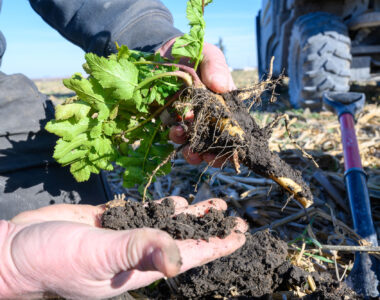
Iowa farmers have now confirmed tar spot in Iowa corn across 35 counties this season. The confirmation comes during one of the wettest July periods on record, raising concern about potential yield loss and management options in affected fields.
Why Tar Spot Is Emerging Now
Tar spot, caused by the fungus Phyllachora maydis, has existed in Iowa since 2016 and now shows up statewide. The disease thrives in humid, wet conditions—and we’ve experienced six consecutive weeks of rainfall that have created the perfect environment.
Although tar spot appeared earlier in June in counties like Franklin and Poweshiek, high July temperatures may help slow its spread. Cases this year remain mostly below the ear leaf and have not yet caused widespread damage.
What Iowa Farmers Should Do
Scout your fields regularly. Inspect corn leaves, especially around the ear leaf, for black, raised fungal spots that don’t scrape off.
Time fungicide applications carefully. Research from the Crop Protection Network shows sprays work best during the R2–R3 growth stages. Applications made before tasseling or late in dough stage provide little benefit. If disease pressure is severe, consider a second spray at R4, but monitor ROI closely.
What to Expect from Disease Impact
Tar spot reduces yield by causing premature leaf death, lower kernel fill, and lighter ears. Agronomists estimate it can cut yield by 50–60 bushels per acre if untreated in high-pressure conditions.
Reporting shows most infected fields currently show minimal disease, but Extension specialists urge caution: disease develops rapidly under sustained humidity, and some hybrids remain highly susceptible.
Overall Crop Progress & Outlook
Despite disease challenges, Iowa’s corn crop is progressing ahead of average. As of late July, 84% of corn had reached the silking stage, and 34% had entered the dough stage—both above five-year norms. USDA rated 87% of the crop good or excellent, signaling healthy fields aside from disease concerns.
Key Takeaways on Tar Spot in Iowa Corn
- Tar spot now shows up in 35 counties, with more likely to follow.
- Scout early and often to catch infection before it gets serious.
- Spray strategically, targeting R2–R3 stages for best control.
- Watch weather closely, since continued wet conditions can fuel spread.
- Monitor hybrids; some varieties resist infection better than others.
With early detection and careful management, farmers can minimize damage while maintaining yield and profitability. Staying informed and proactive remains the best defense against tar spot in Iowa corn.



